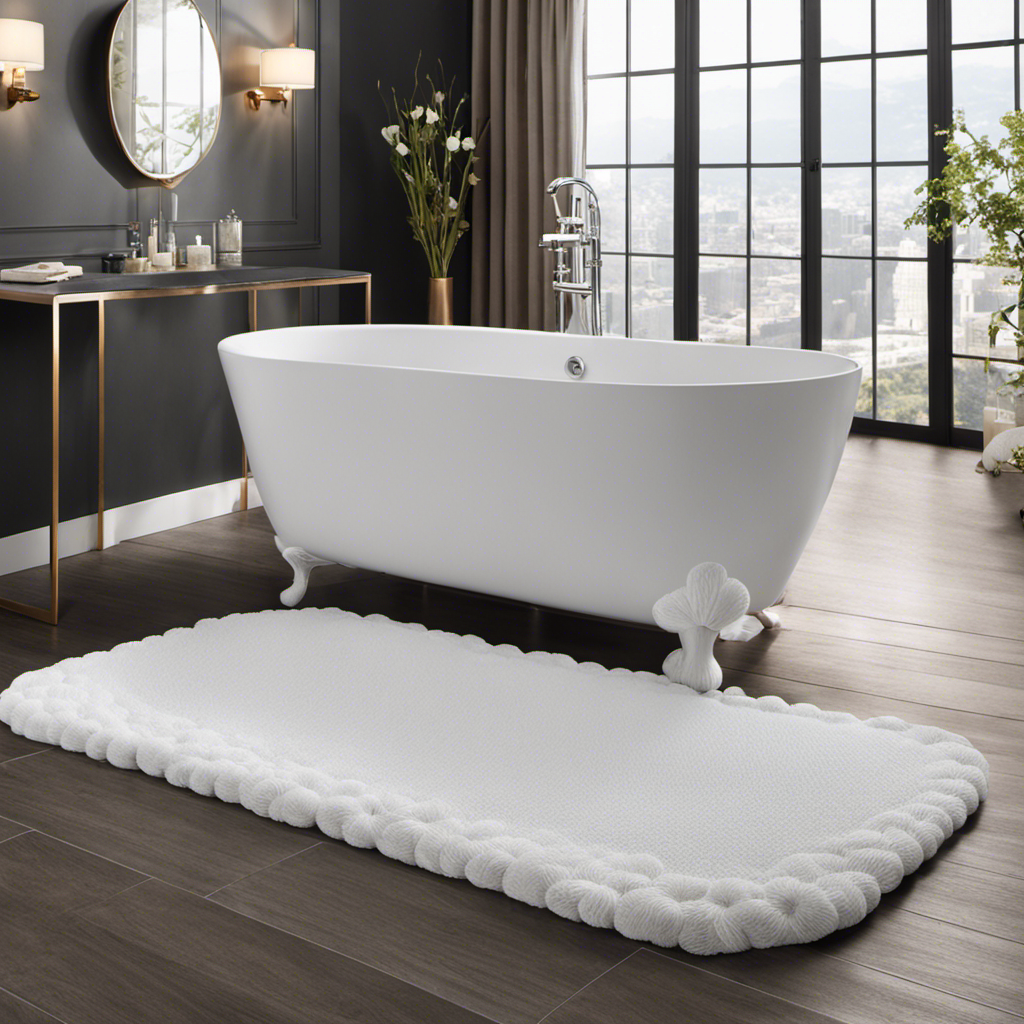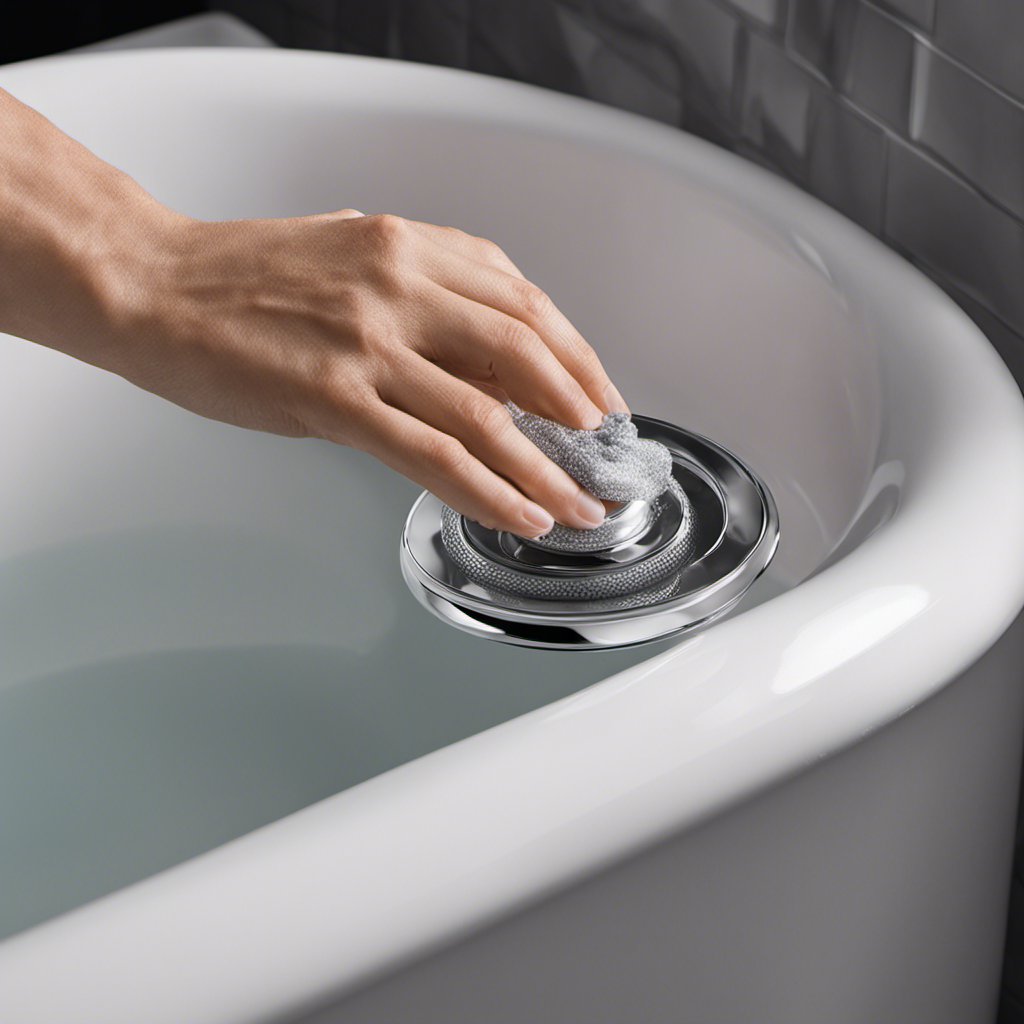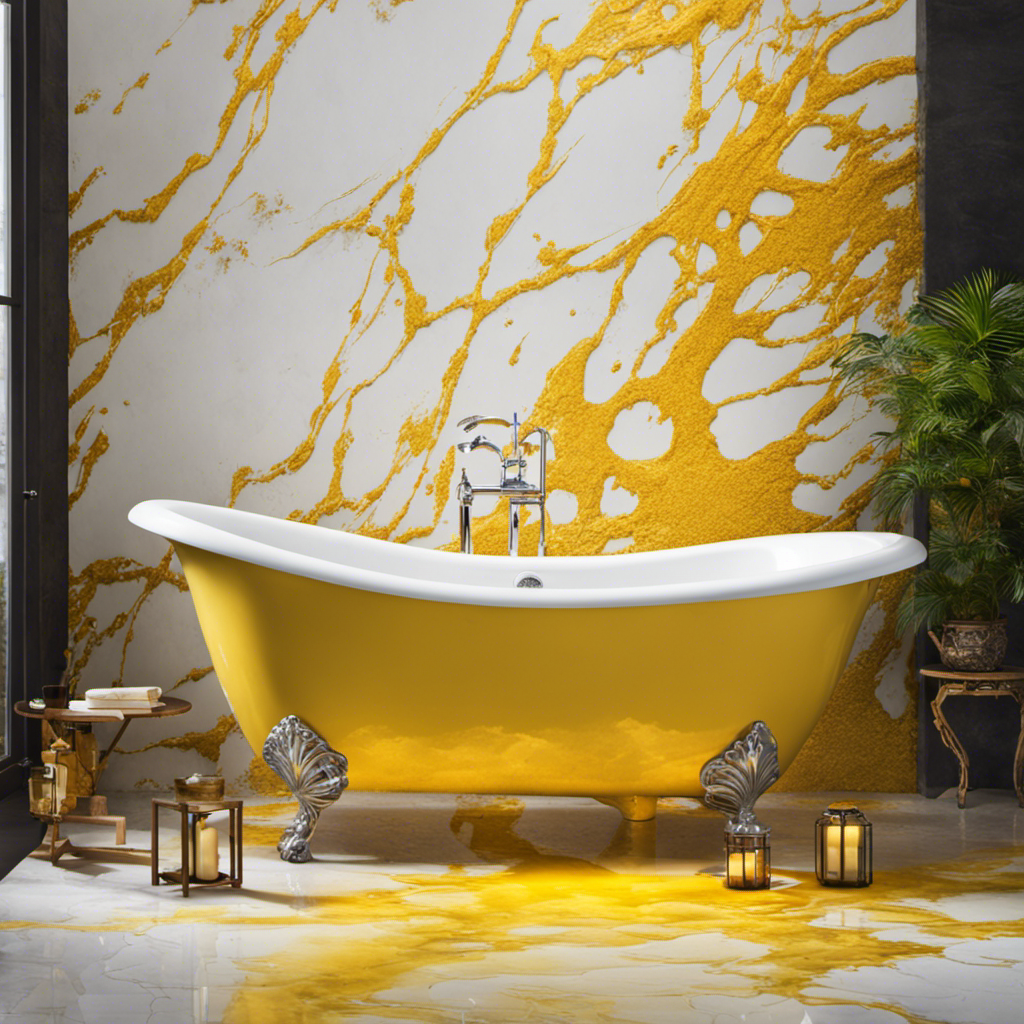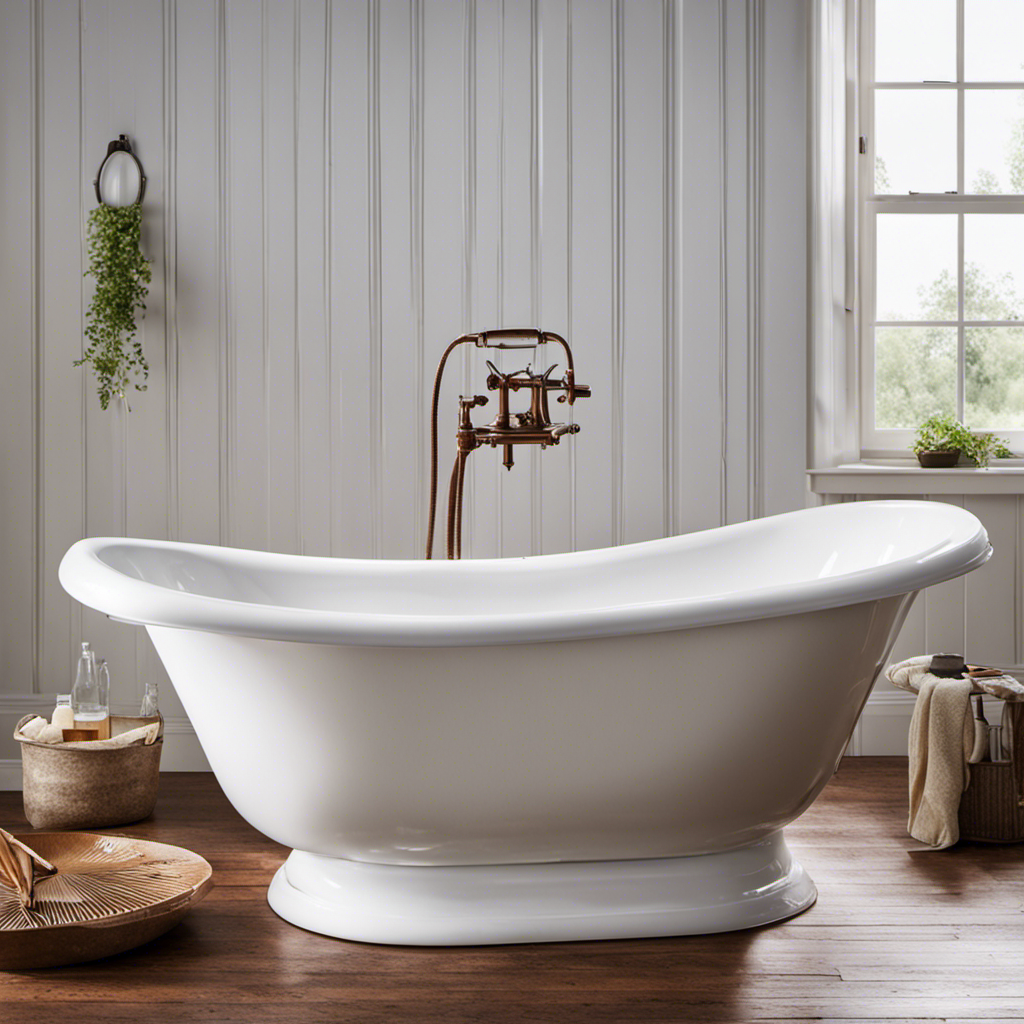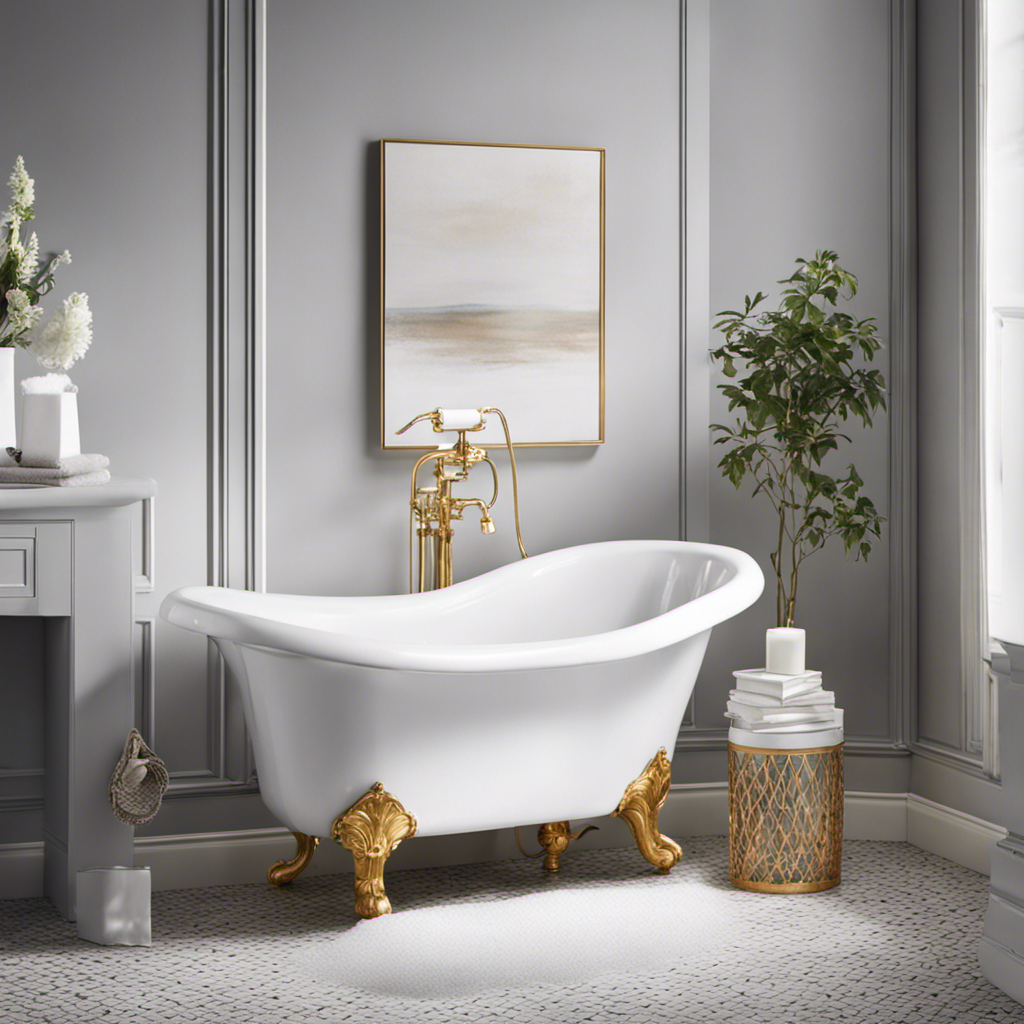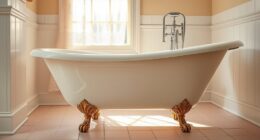I’ve always dreaded slipping in the bathtub, so I decided to find a solution. After thoroughly researching and testing various methods, I’ve discovered effective ways to make your bathtub less slippery.
In this article, I’ll guide you through assessing the slipperiness of your bathtub, identifying the causes, choosing the right non-slip solution, and applying coatings to prevent slipping.
With these practical tips and tricks, you’ll be able to maintain a slip-free bathtub and enjoy a safer bathing experience.
Key Takeaways
- Assess the slipperiness of your bathtub by shifting weight from one foot to the other and filling the tub with water to test with weight shifting.
- Identify the causes of slippery surfaces in the bathtub, such as smooth materials, soap scum, mineral deposits, and the type of bath mat or adhesive strips used.
- Choose the right non-slip solution for your bathtub, considering durable materials, strong adhesive, and easy installation.
- Apply non-slip coatings, use rubber bath mats, or apply adhesive strips to create a textured surface that provides traction and prevents slipping. Regular cleaning and maintenance of the non-slip surface is important.
Assessing the Slipperiness of Your Bathtub
Before you start making any changes to your bathtub, it’s important to assess how slippery it currently is. Bathtub safety precautions are crucial for preventing bathtub accidents, especially for those with limited mobility or children in the household.
To determine the slipperiness of your bathtub surface, start by standing inside the empty tub and slowly shift your weight from one foot to the other. Pay attention to any sliding or unsteadiness.
Next, fill the tub with water and repeat the weight shifting test. If you notice an increase in slipperiness, it’s a sign that the water may be contributing to the problem.
Keep in mind that different factors can cause slippery surfaces in the bathtub, so let’s move on to identifying the causes and finding solutions.
Identifying the Causes of Slippery Surfaces in the Bathtub
To identify the causes of slippery surfaces in the tub, start by examining the materials used and their level of traction. This is crucial in preventing accidents and ensuring bathtub safety.
One common cause of slipperiness is the use of smooth and non-textured materials. These materials, such as porcelain or acrylic, may look sleek but lack the necessary grip to prevent slips and falls. Additionally, the accumulation of soap scum and mineral deposits can make the surface even more slippery. Regular cleaning with non-slip cleaning products can help prevent this.
Another factor to consider is the type of bath mat or adhesive strips used. Ensure they are securely attached and provide sufficient traction.
Choosing the Right Non-Slip Solution for Your Bathtub
When choosing the right non-slip solution for your tub, consider the level of traction provided by different materials and adhesive options. Here are three key factors to consider:
-
Material: Look for non-slip solutions made from durable materials like rubber or silicone. These materials provide a good grip and are resistant to water and chemicals, ensuring long-lasting effectiveness.
-
Adhesive: Opt for a non-slip solution that uses a strong adhesive to ensure it stays in place even when wet. Look for adhesives that are specifically designed for use in wet environments to prevent accidents.
-
Easy installation: Choose a non-slip solution that is easy to install yourself, without the need for professional help. This not only saves you money but also allows you to make adjustments as needed.
By considering these factors, you can ensure bathtub safety and prevent accidents.
Now let’s explore how to apply non-slip coatings to prevent slipping in the bathtub.
Applying Non-Slip Coatings to Prevent Slipping in the Bathtub
Applying non-slip coatings can greatly increase bathtub safety and prevent accidents. These coatings create a textured surface that provides traction and reduces the risk of slipping.
One of the benefits of using bath mats in preventing slips is that they are easily removable and can be cleaned separately. Bath mats come in various sizes and materials, including rubber, which offers excellent grip.
Another alternative method for making bathtubs less slippery is to use adhesive strips. These strips are applied directly to the surface of the tub and provide a non-slip surface. However, they may need to be replaced periodically.
Regardless of the method chosen, it is important to regularly clean and maintain the non-slip surface to ensure its effectiveness in preventing accidents.
Maintaining a Slip-Free Bathtub: Tips and Tricks
Regularly cleaning and maintaining a slip-free bathtub is crucial for ensuring its effectiveness in preventing accidents. Here are some practical tips and tricks to help you maintain a safe and slip-free bathtub:
-
Clean the bathtub regularly: Use a non-abrasive cleaner to remove any soap scum or residue that can make the surface slippery. Rinse thoroughly to ensure there is no residue left behind.
-
Use a bath mat or non-slip stickers: Place a bath mat with suction cups or apply non-slip stickers to the bottom of your bathtub. These provide added traction and reduce the risk of slipping.
-
Dry the bathtub after each use: Wipe down the bathtub with a towel or squeegee after each use to remove any excess water. This helps prevent the buildup of water and reduces the risk of slipping.
Conclusion
To ensure a safe and slip-free bathing experience, it is important to take measures to make your bathtub less slippery.
Assess the slipperiness of your bathtub and identify the causes of slippery surfaces.
Choose the right non-slip solution for your bathtub, such as non-slip mats or adhesive strips.
Apply non-slip coatings to the bathtub surface to prevent slipping.
Lastly, maintain a slip-free bathtub by regularly cleaning and maintaining the non-slip solutions.
Did you know that according to the Centers for Disease Control and Prevention, over 230,000 people are treated in emergency rooms each year due to bathroom-related injuries?
Taking steps to make your bathtub less slippery can significantly reduce the risk of such accidents and keep you safe.
